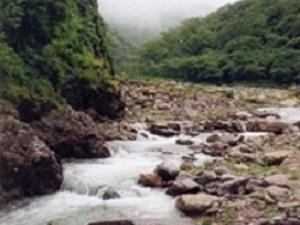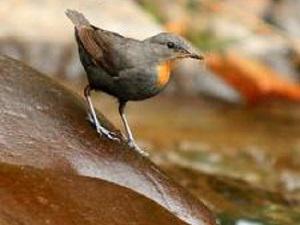Veronica Miranda
This project will assess the population status and distribution of the Rufous-throated dipper in the rivers and streams of the subtropical montane forests of Argentina.

Montane forest river.
Montane forests harbour a rich diversity of species, however they are one of the most threatened ecosystems; e.g., more than 90% of subtropical montane forests of north-western Argentina have disappeared or are degraded. These forests provide essential ecological services, such as capture of water, soil preservation, and water flow regulation. Watersheds depend on montane forests and degradation of these forests will have profound negative effects in the area’s hydrology. Conservation of montane forests rely that people understand the richness that these forests harbour and their key role in the hydrology, mainly in watershed regulation. Especially since montane forests supply high quality water on which humans depend and will become a scarce resource as demand from human population continues to increase. Conservation actions for montane forests need to be taken urgently to prevent their degradation. Unfortunately, the ecology and dynamics of watersheds in subtropical montane forests are poorly understood. Many species are dependent on these water systems –particularly habitat specialists- and they can go locally or regionally extinct with changes in water dynamics.

Cinclus schulzi (dipper) has a very restricted range in southern Bolivia and north-western Argentina, is categorized as vulnerable. As all dippers, it is restricted to swift, unpolluted, rocky streams, and is sensible to modifications of hydrological change, deforestation, and stock-rearing. Understanding the dipper’s status, distribution, and conservation needs is important since it can be used as an indicator of the environment quality.
We will conduct surveys of dippers in rivers of montane forests of north-western Argentina to determine their population status. We will also determine land use in nearby areas and relevant habitat variables. Dippers can also serve as a flagship species to raise awareness of the values of montane forests, especially conserving its unique biodiversity. Therefore, a conservation education campaign will be carried out at all levels from local to national, and with the actors who directly impact, or derive benefit from, montane forest. Montane forests will not be conserved until people know what values are being lost.